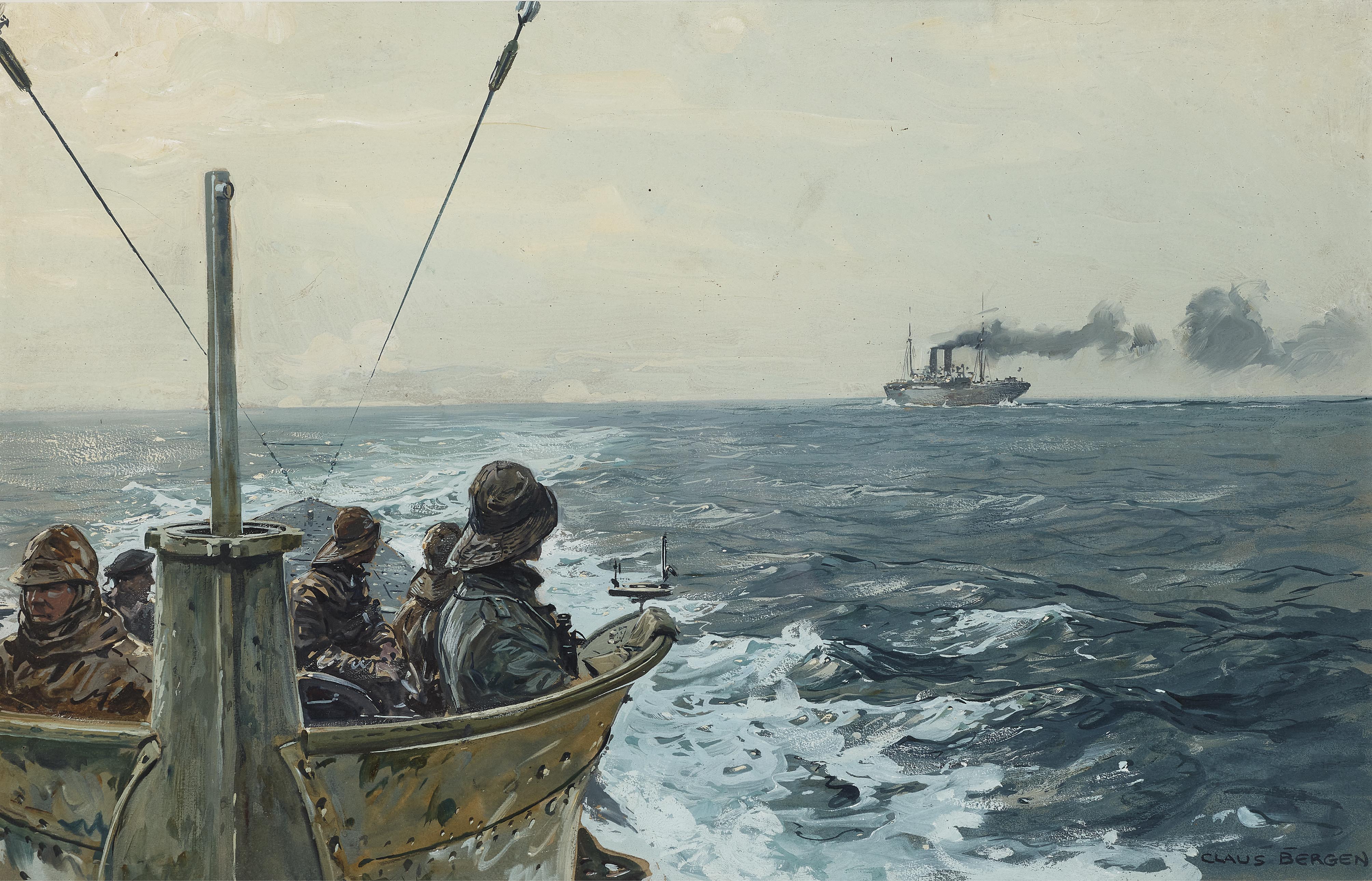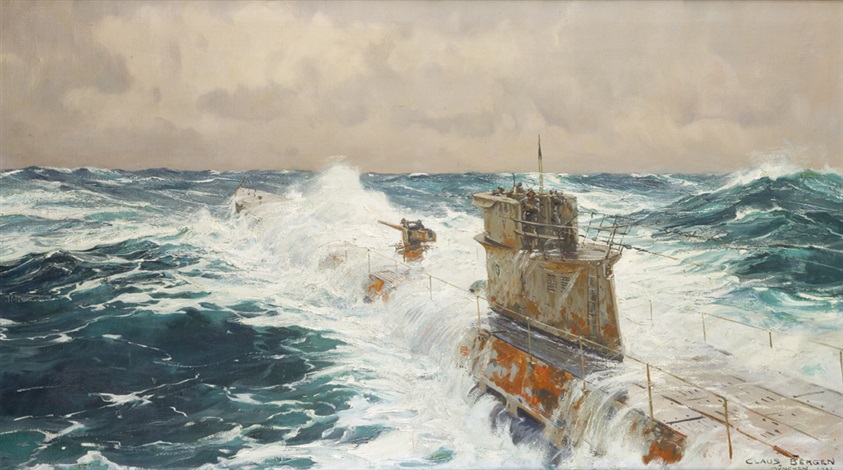I believe the Hurricane shot down more German aircraft than the Spitfire.
You are using an out of date browser. It may not display this or other websites correctly.
You should upgrade or use an alternative browser.
You should upgrade or use an alternative browser.
[PIC GALLERY] Prints, Cartoons & Drawings of War
- Thread starter Louis
- Start date
- Joined
- Oct 11, 2010
- Messages
- 13,147
- Reaction score
- 8,181
- Age
- 61
"The Strongest" (1915) was painted by the Italian artist Fortunino Matania (1881-1963).
It shows a scene from WW1, where a young boy is making fun of the oppressor. Judging by the French text on the left, it is a French (or Belgian) boy sticking out his tongue to the German soldier, while his mother is avoiding any contact with the soldiers. And the soldier seems uncertain how to react to this…

It shows a scene from WW1, where a young boy is making fun of the oppressor. Judging by the French text on the left, it is a French (or Belgian) boy sticking out his tongue to the German soldier, while his mother is avoiding any contact with the soldiers. And the soldier seems uncertain how to react to this…

From the wooden shoes Im guessing they may be Dutch.
Last edited by a moderator:
Nice catch! 
- Joined
- Oct 11, 2010
- Messages
- 13,147
- Reaction score
- 8,181
- Age
- 61
"This sketch, of an Army platoon leader of the 29th Infantry Div fully dressed for D-Day, is by Lt. Jack Shea. In his annotations, Shea shows how the soldier carried not just combat gear (hand grenade, carbine, knife) but also materials meant to aide in traversing the French countryside after passing through the battle on the beach (maps, compass, wirecutters, binoculars). The soldier strapped a first-aid kit to his belt, for easy accessibility, and carried another on his boot".


"According to the 29th Div historical website, one of its regiments was part of the first wave at Omaha Beach, with the rest soon to follow. Fighting alongside the 1st Infantry Div and nine companies of Army Rangers, the 29th assaulted the western portion of the beach. Following D-Day, the Div fought in France and then Germany, remaining in Europe through spring 1945".
"Shea was attached to the 29th as a combat historian. The Historical Divi. of the War Department, home of these “historical officers,†consisted of officers and enlisted men who were former professors, lawyers, and newspapermen".
"Early in the war, the Army’s historians gathered second-hand battle reports and documents, while largely remaining stateside. But in 1944, Gen. George C. Marshall ordered the group to produce morale-boosting short pamphlets about recently concluded operations, to be read by soldiers wounded in those actions while in recovery".
"Shea’s attachment to the 29th Infantry in June 1944 seems to have been one result of this policy".

"According to the 29th Div historical website, one of its regiments was part of the first wave at Omaha Beach, with the rest soon to follow. Fighting alongside the 1st Infantry Div and nine companies of Army Rangers, the 29th assaulted the western portion of the beach. Following D-Day, the Div fought in France and then Germany, remaining in Europe through spring 1945".
"Shea was attached to the 29th as a combat historian. The Historical Divi. of the War Department, home of these “historical officers,†consisted of officers and enlisted men who were former professors, lawyers, and newspapermen".
"Early in the war, the Army’s historians gathered second-hand battle reports and documents, while largely remaining stateside. But in 1944, Gen. George C. Marshall ordered the group to produce morale-boosting short pamphlets about recently concluded operations, to be read by soldiers wounded in those actions while in recovery".
"Shea’s attachment to the 29th Infantry in June 1944 seems to have been one result of this policy".
- Joined
- Oct 11, 2010
- Messages
- 13,147
- Reaction score
- 8,181
- Age
- 61
Crew preparing to fire their Nebelwerfer 42 on the Eastern Front 1943.


What are the paddles for? 
He’s trying to get ESPN.What are the paddles for?
- Joined
- Oct 11, 2010
- Messages
- 13,147
- Reaction score
- 8,181
- Age
- 61
Or maybe killing mosquitoes?...
Really I understood they were used to control traffic.
Really I understood they were used to control traffic.
Soo...if the paddle monkey puts up two red ones the enemy will stop its advance?
- Joined
- Oct 11, 2010
- Messages
- 13,147
- Reaction score
- 8,181
- Age
- 61
Wounded Gunner Home from Lae, 1943. By Captain (Australian Imperial Force) Roy Cecil Hodgkinson (1911/1993), a cartoonist and illustrator.


Always liked Claus Bergen's paintings:





it all started with the cover of this great boardgame:
:strip_icc()/pic3935560.png)




it all started with the cover of this great boardgame:
:strip_icc()/pic3935560.png)
- Joined
- Oct 11, 2010
- Messages
- 13,147
- Reaction score
- 8,181
- Age
- 61
Carl Röchling (1855-1920), The Soldiers Christmas.


- Joined
- Oct 11, 2010
- Messages
- 13,147
- Reaction score
- 8,181
- Age
- 61
"Shooting Gallery" by Constantin Alajalov (1900-1987) for The Saturday Evening Post (Sept 12, 1953).


- Joined
- Oct 11, 2010
- Messages
- 13,147
- Reaction score
- 8,181
- Age
- 61
Soviet cartoon from the WWII (1942) showing a concerned J. Goebbels inspecting soldiers at the front while holding a propaganda image of a cheery soldier behind his back.






























































































